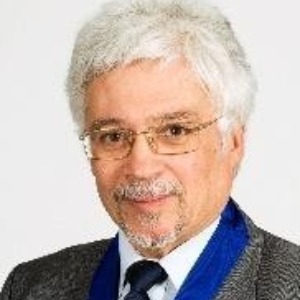Title : Acute traumatic spinal cord injuries impact of the model of service delivery comprehensive Active Physiological Conservative Management (APCM) and rehabilitation on the range of outcomes
Abstract:
Traumatic Spinal Injuries can present with or without neural tissue damage. Both the force and the direction of the impact determine the presence or absence of neurological damage. The principles of management of the injured spine and of the patients with or without neural tissue damage are very different and are likely to have an impact on the neurological and a range of other outcomes of the management.
Traumatic Spinal Cord (TSCI) and Cauda Equina Injuries (TCEI) are life-changing events with medical, physical, psychological, social, financial, vocational, environmental & matrimonial effects. The combination of small incidence (10-50/million population), consequent pan-physiological impairment, multi-system malfunction, sensory impairment/loss, multiple disabilities, together with their non-medical effects impose challenges to patients and clinicians alike.
This challenge is magnified during the transitional period between the spinal and autonomic areflexia (shock) and the return of these reflexes. During this period, which lasts a few days to weeks, the patient is at a much higher risk of a range of complications than following the return of autonomic and spinal reflex activity. Fortunately with simultaneous adequate management of the injured spine together with each of the systemic effects of cord damage, by a knowledgeable well-trained and experienced team of clinicians and health care professionals; almost all complications can be prevented or diagnosed and treated before deterioration, morbidity and neurological deterioration occur.
Spontaneous Neurological Recovery is predictable and not uncommon following TSCI & TCEI This recovery depends on the following:
- Familiarity of Clinicians and Health Care Professionals treating patients with the differences in the effects and Principles of Management of a Spinal Injury in patients with spinal cord and cauda equina injury and patients without neural tissue damage or with only damage of some nerve roots
- The quality of management of the multisystem physiological impairment and malfunction to prevent systemic and iatrogenic complications is excellent. This is considering that systemic complications can cause further non-mechanical damage to neural tissues by destabilising the Physiologically Unstable Injured neural tissue that result in additional neurological loss
- The adequacy of the management of the Biomechanical Instability of the injured spine to prevent further mechanical damage of the neural tissue from bony or ligamentous structures
- The presence or absence of clinical signs of sensory or sensory motor sparing at and below the level of injury
- An adequate rehabilitation program of every impaired system of the body affected by the neurological damage including the locomotor system.
In the mid-sixties Frankel and colleagues made an astute observation that with what can be described as good Active Physiological Conservative Management of the injured spine, the multisystem malfunctions to prevent prevention of systemic complications and with adequate rehabilitation, patients presenting within 14 days of injury with complete motor paralysis but sensory sparing made spontaneous motor recovery from the reactivated myotomes adjacent to the functioning dermatomes. This recovery is irrespective of the severity of the spinal injury on XRays at admission as well as on discharge. The same observations of the the discrepancy between the radiological and neurological presentations on admission and on discharge have been made using CT and MRI by El Masri et al as well as many other international groups specialising in the management of patients with traumatic Spinal Cord injuries and Cauda Equina injuries.
The prognostic indicators of neurological recovery, its extent and the factors that prevent recovery or cause neurological deterioration as well as the role of CT and MRI will be discussed. In the last four decades, routine surgical stabilisation and decompression have been carried out on patients with and without traumatic cord damage supported by claims that surgical intervention is necessary to prevent neurological deterioration and enhance recovery. The rationale and quality of evidence used in justifying these claims will be briefly discussed.




